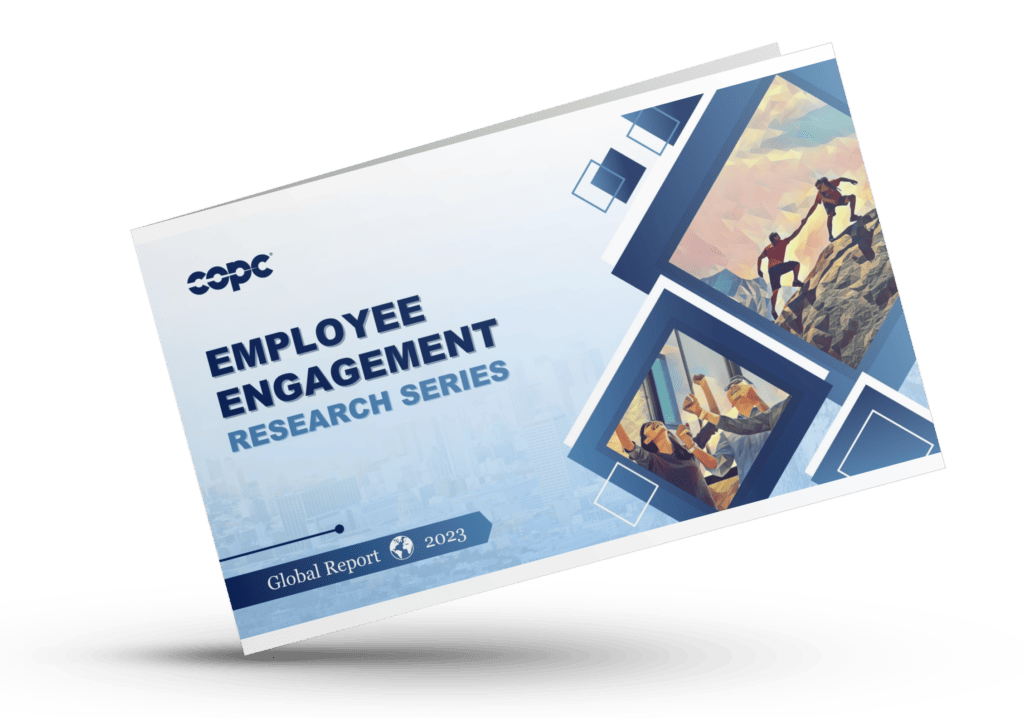
April 4, 2024
Contact center managers often attribute high attrition to unfulfilling tasks and a lack of professional advancement opportunities. A critical factor to consider when designing an employee retention strategy is the level of employee engagement. Forbes explains employee engagement as “the emotional commitment the employee has to the organization and its goals.”
Forward-thinking leaders realize that a highly engaged workforce underpins organizational success. Continuous development programs that begin during the onboarding process are vital to any employee engagement strategy. High employee turnover creates a culture with ‘revolving door’ values that lead to poor employee experience.
Company culture and employee satisfaction go hand-in-hand. Reducing high turnover rates by increasing employee engagement benefits productivity and bottom-line growth. Of course, there is no one size fits all. However, positive feedback and recognition can help prevent your best talent from leaving too soon.

Related
Call Center Attrition: Avoid the Dilemma of First-Day Ghosting
Learn from industry experts how to reduce call center attrition. Avoid first-day ghosting and optimize employee retention.
Boost Employee Engagement and Retention
When evaluating employee engagement within your organization, consider these three questions:
1. Are employees enthusiastic about serving customers and providing a superior experience?
We can all agree that it is noticeable when someone is passionate about their work. When evaluating levels of engagement, notice whether there is a drive to provide the best experience possible. To do this:
- Observe how individuals engage in conversations about their projects.
- Be aware of the tone in which they answer emails or phone calls.
- Listen closely to follow-up questions to better enable staff to reach their goals.
These three things indicate a desire to serve a greater purpose within the team and organization. Give employees the recognition they deserve when you notice the amount of effort someone puts forth.
2. Do employees collaborate with their team members and managers in solving problems, improving performance or assisting others?
Collaboration is another crucial element when assessing an employee’s level of engagement. Engaged employees will turn to whoever is necessary to solve a problem that stands in the way of achieving their goal. Ensure open communication and a healthy exchange of ideas happen daily. Capitalize on opportunities to show up for your team—support them and express care for their well-being.
Genuine interest and proper guidance inevitably lead to higher productivity as employees strive for success. Each time they meet their goals, they experience greater job satisfaction. By helping staff navigate their career journey, leaders will reap the rewards of increased productivity and retention.
3. Do employees take ownership of their performance and development, seeking new learning opportunities?
Finally, engaged employees will want to develop and improve their performance. Engaged employees are aware of their downfalls and find ways to continue to grow. As a leader, take notice of the growth opportunities your employees participate in.
Try asking about new books they are reading and passing along new opportunities. You can encourage them to participate in training classes and webinars on company time. Be mindful of employees actively seeking new learning opportunities as it shows a yearning for professional growth.
Organizations can boost retention rates by engaging staff and giving them the necessary tools for long-term success. When managers remove obstacles, agents can perform well and meet expectations, increasing productivity, retention and bottom-line growth.

Employee Engagement Research Series
Learn how satisfied contact center staff are with their jobs, understand what drives employee satisfaction and distinguish the differences between countries.
